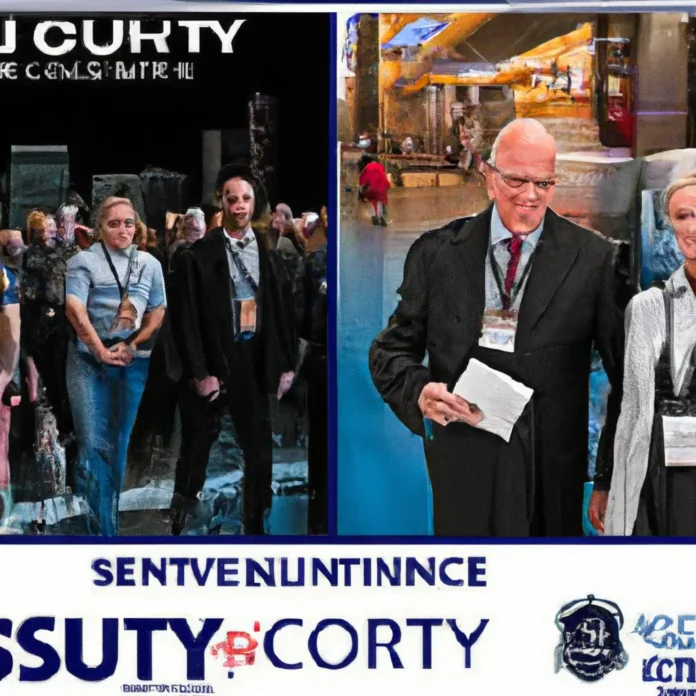Introduction to Corporate Event Security
Corporate events bring together a diverse group of people, from employees and executives to clients and partners, often in high-profile venues. The atmosphere is charged with energy and anticipation, but this very environment can also attract unwanted attention or risks. Providing comprehensive event security is essential not only for safety but also for upholding the reputation and smooth operation of the event.
Effective security measures must be multi-layered, tailored to the event’s unique needs, and responsive to evolving threats. In this article, we examine why security matters, review the main risks, and outline three essential service strategies for keeping corporate events safe.
Why Is Security Critical for Corporate Events?
The stakes at corporate events are high—both in terms of financial investment and brand reputation. A single incident can disrupt proceedings, cause distress among attendees, and potentially result in lasting reputational harm. Security is not simply about preventing threats; it’s about ensuring that every participant feels confident and comfortable in the environment.
Moreover, corporate events often involve confidential information, high-value assets, and VIP guests, making them attractive targets for various types of threats. Prioritizing security is a proactive way to safeguard these interests and uphold organizational integrity.
What Are the Main Threats at Corporate Events?
Understanding the spectrum of possible threats is the first step toward building a robust security plan. Corporate events face risks that range from physical disturbances to sophisticated cyberattacks, each requiring a tailored response.
Physical Threats
Physical threats can manifest in many forms, including unauthorized access, theft, vandalism, or even violence. Large gatherings create opportunities for such incidents, especially when security measures are insufficient. The bustling atmosphere, the constant hum of conversation, and the movement of people can make it challenging to detect suspicious behavior without vigilant oversight.
Cybersecurity Threats
With digital registration, event apps, and online connectivity, cybersecurity threats have become increasingly relevant. Hackers may target guest Wi-Fi networks, attempt to access sensitive registration data, or disrupt presentations through digital means. These risks are heightened when attendees use personal devices or when proprietary information is shared during the event.
Reputational Risks
An incident at a corporate event can quickly become public knowledge, especially in today’s hyper-connected world. Negative press or social media backlash can damage a company’s reputation and erode trust with both clients and employees. Preventing such incidents is as crucial as responding to them effectively when they occur.
Legal and Compliance Risks
Failure to meet local regulations, safety codes, or privacy requirements can result in fines, lawsuits, or regulatory action. Compliance risks also include inadequate crowd control, insufficient emergency planning, or mishandling of personal information. Addressing these proactively is fundamental to responsible event management.
Understanding the Three Core Service Strategies
A comprehensive approach to event security involves more than just having guards at the door. The most effective solutions integrate proactive assessment, skilled personnel, and technology. We’ll explore three core service strategies that, when combined, create a resilient security framework: proactive risk assessment, on-site security personnel and protocols, and technology-driven solutions.
Strategy 1: Proactive Risk Assessment
Before an event begins, understanding the specific risks associated with the venue, attendees, and event agenda is critical. A proactive risk assessment identifies vulnerabilities and sets the stage for targeted security measures.
What Is a Risk Assessment for Corporate Events?
A risk assessment is a systematic process of identifying, analyzing, and prioritizing potential threats to an event. This includes evaluating the likelihood and impact of various scenarios, from minor disruptions to major emergencies. The goal is to create a security plan that addresses both common and unique risks.
Identifying Potential Security Gaps
Every venue and event format presents different challenges. Gaps may exist in access points, surveillance coverage, or emergency preparedness. Walking through the venue, reviewing past incidents, and consulting with security experts can help identify these weak spots.
Assessing Venue Security Features
Venue features such as lighting, entry and exit points, and surveillance infrastructure play a significant role in event security. Well-lit areas deter misconduct, while robust surveillance helps with real-time monitoring. It’s important to coordinate closely with venue management to understand existing measures and supplement them as needed.
How to Evaluate Attendee Risk Profiles
Certain attendees, such as VIPs or controversial figures, may require additional protection. Reviewing guest lists, understanding attendee backgrounds, and evaluating potential protest activity or targeted threats help tailor security provisions accordingly.
Collaborating With Local Authorities
Establishing relationships with local police, fire departments, and emergency services ensures a rapid response if incidents arise. Sharing event details in advance allows authorities to prepare and support as needed, adding an extra layer of protection.
Strategy 2: On-Site Security Personnel and Protocols
The presence of trained security personnel is a visible and effective deterrent against many threats. Beyond sheer numbers, the expertise of these professionals and the protocols they follow are what truly make the difference.
What Types of Security Personnel Are Needed?
Selecting the right mix of personnel is essential. This can include uniformed guards, plainclothes officers, event staff, and specialized roles such as K-9 units or medical teams. Each brings unique skills and responsibilities to the operation.
Roles of Security Guards vs. Event Staff
Security guards focus on physical protection and incident response, while event staff handle guest assistance and logistical support. Clear communication and defined responsibilities prevent overlap and confusion during critical moments. For events in the capital region, reliable security guard services in DC can be invaluable for ensuring high standards of safety.
The Importance of Trained Security Teams
Trained teams are equipped to spot suspicious behavior, de-escalate conflicts, and respond swiftly to emergencies. Their presence reassures guests and reinforces a sense of order, especially in high-traffic or sensitive areas.
Developing Access Control Protocols
Controlling who enters and exits an event space is a fundamental aspect of security. Effective access protocols minimize the risk of unauthorized entry and help monitor attendee movements throughout the venue.
How to Implement Effective Badge and Credential Systems
Issuing badges or digital credentials to authorized attendees streamlines check-in and enables quick identification. Color-coding or role-based access further restricts sensitive areas to those with a legitimate need.
Screening and Bag Checks: Best Practices
Bag checks and screening procedures deter the introduction of prohibited items. Security staff should be courteous but thorough, using technology such as metal detectors or hand-held scanners to enhance efficiency without causing undue delays.
Emergency Response Planning
No matter how well-prepared an event is, emergencies can still occur. Having a detailed response plan ensures that everyone knows what to do when the unexpected happens.
Evacuation Procedures and Drills
Clear evacuation routes, visible signage, and regular drills prepare staff and attendees for emergencies. Practicing these procedures reduces panic and confusion, helping protect lives when seconds count.
Medical Emergencies: On-Site Support
Having trained medical staff and first aid stations available can make a critical difference during health-related incidents. Prompt response not only safeguards attendees but also demonstrates organizational responsibility and care.
Crowd Management Techniques
Large crowds present unique challenges, from bottlenecks at entrances to surges during popular sessions or breaks. Effective crowd management strategies maintain flow and minimize frustration.
Dealing With Unruly Attendees
Sometimes, attendees may become disruptive due to intoxication, personal disputes, or other factors. Security personnel must be adept at de-escalating situations calmly and respectfully, removing individuals only when necessary.
Maintaining Order During High-Traffic Times
During peak times, such as registration or meal breaks, clear signage, stanchions, and staff guidance help maintain order. Pre-planning for these periods keeps lines moving and reduces stress for everyone involved.
Strategy 3: Technology-Driven Security Solutions
Modern security relies heavily on technology for both prevention and response. From surveillance cameras to cybersecurity tools, the right solutions amplify the effectiveness of human teams and provide critical real-time insights.
What Security Technologies Are Available for Events?
A variety of technologies can be deployed to monitor, detect, and respond to threats. Choosing the right mix depends on the event’s size, location, and risk profile.
Surveillance Cameras and Monitoring Systems
High-definition cameras placed strategically throughout the venue provide constant oversight. Live monitoring enables rapid intervention, while recorded footage aids post-event investigations if needed.
Metal Detectors and Screening Devices
Walk-through and hand-held metal detectors help security staff efficiently screen for weapons or other contraband. These devices are particularly important at events with high-profile guests or elevated threat levels.
Radio Communication Tools for Security Teams
Instant communication among security personnel is vital for coordinating responses and sharing real-time updates. Radios with dedicated channels keep teams connected, even in noisy or crowded environments.
Cybersecurity Measures for Digital Threats
Protecting digital assets is as important as physical security. With the proliferation of event management apps and online registration, robust cybersecurity protocols are non-negotiable.
Protecting Guest Wi-Fi Networks
Open Wi-Fi networks can be an easy target for cybercriminals. Implementing strong encryption, unique access credentials, and network monitoring helps safeguard attendee devices and sensitive data.
Securing Event Registration Data
Personal information collected during registration must be stored securely and accessed only by authorized personnel. Using encrypted databases and secure portals reduces the risk of data breaches.
Mobile App Security for Event Management
Event apps should be developed with security in mind, including secure authentication and regular vulnerability assessments. This protects both the event organizers and the attendees who rely on these tools for scheduling and networking.
Integrating Physical and Digital Security Systems
Blending physical and digital security creates a seamless defense against both traditional and emerging threats. Integration allows for faster detection, response, and resolution of incidents.
Coordinating Security Operations With Real-Time Data
Centralized command centers can synthesize data from cameras, access points, and cybersecurity tools to provide a comprehensive overview. Real-time dashboards empower decision-makers to respond proactively.
Ensuring Privacy Compliance With Technology
Security technologies must comply with all applicable privacy laws and regulations. Limiting data collection, securing storage, and providing transparency to attendees are essential elements of responsible event management.
Pre-Event Security Planning Checklist
A thorough checklist streamlines planning and reduces the risk of overlooked details. Organizers should review:
- Risk assessment documentation
- Venue security features and emergency exits
- Credentialing and access control systems
- Staff and security team schedules
- Emergency response plans and contact lists
- Cybersecurity protocols
- Medical support arrangements
Every item on this list plays a role in creating a safer, more secure event environment.
Key Questions to Ask Your Security Provider
Selecting a security provider requires due diligence. Key questions to consider include:
- What experience do you have with events of this size and type?
- How do you vet and train your personnel?
- What technologies do you utilize?
- How do you coordinate with venue staff and local authorities?
- Can you provide references from similar clients?
These inquiries help ensure that your provider is equipped to meet your event’s specific needs.
How to Train Event Staff in Security Protocols
All event staff, not just security personnel, should be familiar with basic security procedures. Training sessions should cover emergency response, recognizing suspicious behavior, and communication protocols.
Interactive drills and scenario-based learning make training memorable and practical. For events involving VIP transportation, it is helpful to review guidance such as our post on hiring a professional chauffeur service in Maryland to ensure seamless coordination between security and transportation teams.
Communication Plans for Security Incidents
Clear, timely communication is essential during any security incident. Establishing predefined channels—such as radio, SMS alerts, or public address systems—ensures that critical information reaches the right people quickly.
As experts often say:
“In moments of crisis, communication is the bridge between chaos and control.”
Having a spokesperson prepared to address the media and attendees helps manage public perception and maintains trust.
Post-Event Security Evaluation and Debrief
After the event, a thorough review of all security operations is indispensable. This process should include feedback from security personnel, staff, and attendees, as well as analysis of any incidents or near-misses.
Documenting lessons learned and updating protocols ensures continuous improvement for future events.
Common Mistakes to Avoid in Corporate Event Security
Some pitfalls can compromise even the best-laid plans. These often include:
- Underestimating the need for professional security personnel
- Neglecting cybersecurity measures
- Failing to train staff adequately
- Poor communication during incidents
- Overlooking compliance and privacy requirements
Avoiding these mistakes can make the difference between a well-run event and a problematic one.
How to Choose the Right Security Partner
When selecting a security partner, prioritize experience, transparency, and a proven track record. Look for providers who understand the unique requirements of corporate events and offer tailored solutions.
For events requiring armed protection, you may wish to review trusted armed security guard services near you to ensure your team is prepared for any situation.
Balancing Guest Experience With Security Measures
Security should never overshadow the guest experience. Striking a balance between stringent protocols and a welcoming atmosphere is key. Use discreet technologies, well-trained staff, and streamlined processes to maintain comfort while keeping everyone safe.
Attention to detail—such as polite screening procedures and unobtrusive surveillance—can help guests feel cared for, rather than scrutinized.
Case Studies: Successful Corporate Event Security in Action
Examples of effective event security highlight the value of preparation and professionalism. In one notable instance, a multinational company hosted a high-profile summit, implementing layered access controls, real-time surveillance, and integrated cyber protections. The event concluded without incident, and guest feedback praised both the sense of safety and the smooth flow of activities.
For luxury events where high-profile guests arrive in style, combining elite transportation with robust security, as we discussed in our post about black car chauffeur service for elite travelers, adds another dimension of professionalism and peace of mind.
Frequently Asked Questions About Event Security
What is the minimum security staff required for a corporate event?
The number depends on event size, location, and risk profile. Consult with your provider for a tailored assessment.
How can we protect sensitive company information during an event?
Use encrypted registration systems, secure Wi-Fi, and restrict access to confidential sessions.
Should we inform attendees about all security measures?
Transparency about general procedures is reassuring, but it is wise to withhold sensitive details for security reasons.
How often should we run emergency drills?
Drills should be part of every event’s preparation, ideally rehearsed with both security and staff in advance.
What’s trending in event security for 2025?
There is growing interest in integrated digital-physical strategies and seamless guest experiences, as we discussed in our analysis of why chauffeur service is trending big in 2025.
Conclusion: Building a Safe and Successful Corporate Event
A safe event is the result of careful planning, expert personnel, and smart technology—all working together to protect people, assets, and reputations. By prioritizing proactive risk assessment, skilled on-site teams, and innovative solutions, organizations can create memorable and secure experiences for every guest. For those seeking guidance or tailored support, Autoxite stands out as a trusted source for event security insights and resources.


